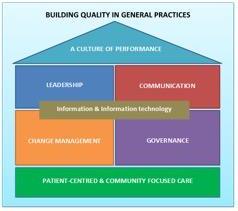Establishing a functional diabetic retinopathy (DR) screening service in general practice
This online implementation module addresses the utilisation of the MBS item numbers for DR screening in general practice and primary health care. It is based on the findings of an National Health and Medical Research Council (NHMRC) trial which identified that general practices, with appropriate camera and in-practice training, achieved mean effective DR screening rates of 99% (NHMRC estimates our national rate at 50%). The module includes perspectives of patients and practitioners regarding optimal screening and is suitable for urban, rural and Aboriginal Medical Service settings. It can be undertaken as a practice or as GP-only training and the self-test allows GPs to be confident in the accuracy of their post training image interpretation. The module is suitable for RACGP Category 1 ALM or Small Group Learning options.
- Askew D, Crossland L, Ware R, Cranstoun P, Mitchell P, Bryett A, Jackson CL. Diabetic retinopathy screening and monitoring of early stage disease in general practice: Design and methods. Contemporary Clinical Trials 33 (2012): 969–975. https://www.ncbi.nlm.nih.gov/pubmed/22575797
- Crossland LJ, Askew D, Ware R, Cranstoun P, Mitchell P, Bryett A, Jackson CL.Diabetic retinopathy screening and monitoring of early stage disease in Australian general practice: Tackling preventable blindness with a chronic care model. Journal of Diabetes Research. 2016. doi.org/10.1155/2016/8405395
- Glasson N, Crossland L, Larkins S. An innovative Australian outreach model of diabetic retinopathy screening in remote communities. Journal of Diabetes Research. 2016. https://www.hindawi.com/journals/jdr/2016/1267215/
- Glasson N, Larkins S, Crossland L. What do patients with diabetes and providers think of an innovative model of remote diabetic retinopathy screening? A qualitative study. BMC Health Services Research (2017) 17: 158 https://www.ncbi.nlm.nih.gov/pubmed/28222770
The Primary Care Practice Improvement Tool (PC-PIT) Process
 The Primary Health Care Improvement Tool (PC-PIT) Process is a whole of practice approach to organisational improvement validated for use in Australian general practice and primary health care services. The process can be used as both a stand-alone quality improvement approach, and also as means of assessing practice readiness for change in transitioning to the Health Care Home model. It comes with accompanying high quality resources and full workshop training for Primary Health Networks (PHNs) wishing to use the tool as part of quality improvement and practice support programs. Workshop content and delivery can be tailored to meet the aims, needs and level of experience of each PHN. For further information, please contact Samantha Borg at s.borg@uq.edu.au.
The Primary Health Care Improvement Tool (PC-PIT) Process is a whole of practice approach to organisational improvement validated for use in Australian general practice and primary health care services. The process can be used as both a stand-alone quality improvement approach, and also as means of assessing practice readiness for change in transitioning to the Health Care Home model. It comes with accompanying high quality resources and full workshop training for Primary Health Networks (PHNs) wishing to use the tool as part of quality improvement and practice support programs. Workshop content and delivery can be tailored to meet the aims, needs and level of experience of each PHN. For further information, please contact Samantha Borg at s.borg@uq.edu.au.
PC-PIT publications
Borg S, Donald M, Totsidis K, Quinn N, Jackson C, ‘Improving quality in general practice using the Primary Care Practice Improvement Tool (PC-PIT) with Primary Health Network support.’ Australian Journal of Primary Health 10 December 2020; 484-491 https://doi.org/10.1071/PY20192
Borg S, Crossland L, Risk J, Porritt J, Jackson C ‘The Primary Care Practice Improvement Tool (PC-PIT) Process for organisational improvement in primary care’ Australian Journal of Primary Health, 2019 https://doi.org/10.1071/PY18106
Crossland L, Upham SJ, Janamian T, Siskind V, Sheehan M and Jackson CL. (2016).Trial of the Primary Care Practice Improvement Tool: building organisational performance in Australian general practice and primary health care https://www.mja.com.au/journal/2016/204/7/trial-primary-care-practice-improvement-tool-building-organisational-performance
Crossland L, Janamian T, Sheehan M, Siskind V, Hepworth and Jackson CJ. (2014) Development and pilot study of the Primary Care Practice Improvement Tool (PC-PIT): an innovative approach https://www.mja.com.au/journal/2014/201/3/development-and-pilot-study-primary-care-practice-improvement-tool-pc-pit
Crossland L, Janamian T and Jackson CL. (2014). Key elements of high-quality practice organisation in primary health care: a systematic review https://www.mja.com.au/journal/2014/201/3/key-elements-high-quality-practice-organisation-primary-health-care-systematic
